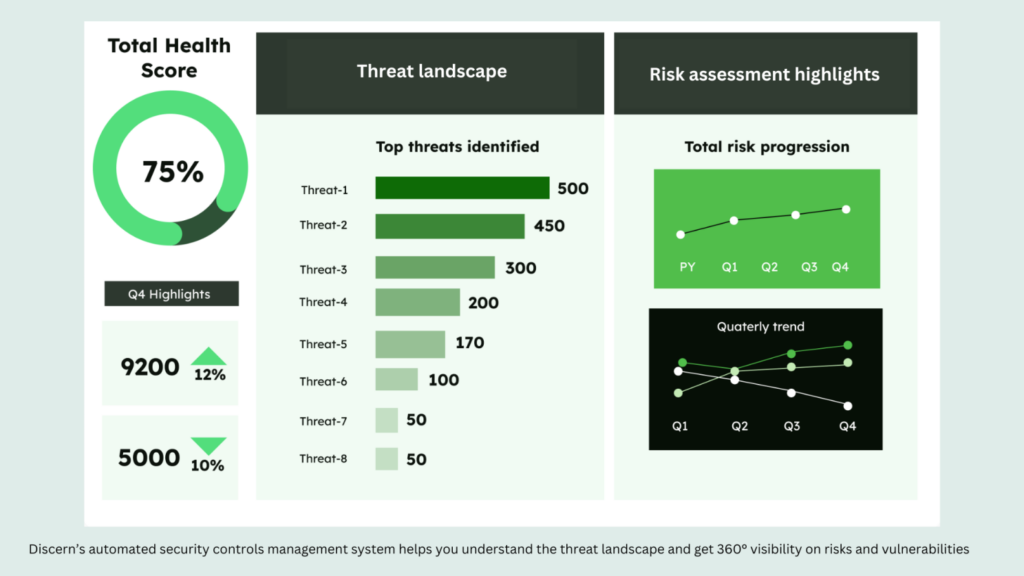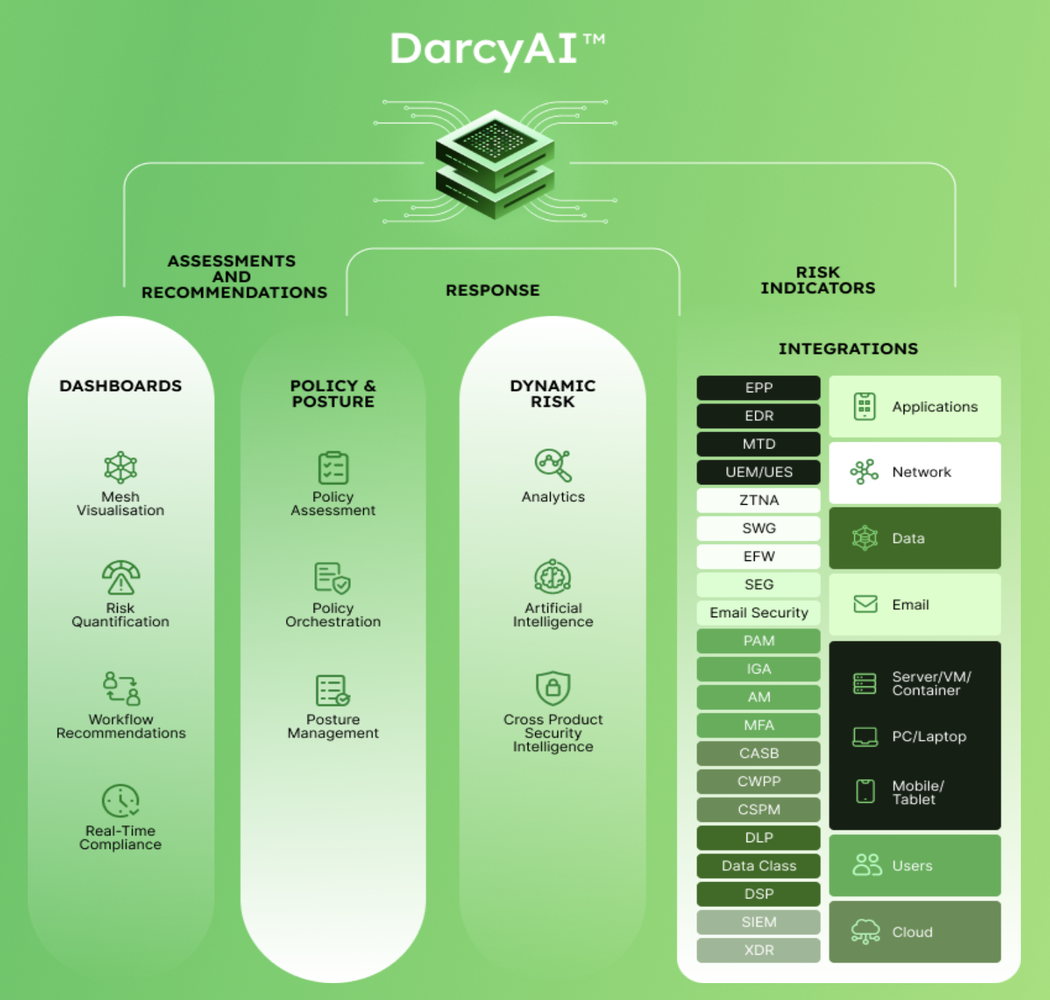
Managing Director at Discern Security
In today’s digital landscape, where cyber threats loom large and data breaches can have devastating consequences, effective security controls management is paramount for modern organizations. Security controls encompass a range of measures designed to safeguard sensitive information, protect against unauthorized access, and mitigate risks to the organization’s assets and reputation. From firewalls to encryption protocols, these controls form the backbone of a robust cybersecurity strategy, ensuring the confidentiality, integrity, and availability of critical data.
However, managing these security controls manually can be a daunting task, especially as organizations grapple with ever-evolving threats and complex regulatory requirements. This is where the concept of automating security controls management comes into play. By leveraging automation technologies, organizations can streamline routine security tasks, improve response times to security incidents, and enhance overall operational efficiency.
For CISOs, automation offers a powerful tool to adapt and scale their security practices in the face of evolving threats and growing organizational needs. Automation allows CISOs to allocate resources more effectively, prioritize security initiatives, and stay ahead of emerging risks, ultimately enabling them to better protect their organizations in an increasingly digital world.
Managing Complexity: CISOs face the challenge of managing a complex array of security controls across multiple tools and platforms, often leading to inconsistencies and gaps in coverage.
● Resource Constraints: According to a study by cybersecurity ventures there is an estimated global cybersecurity workforce gap of 3.4 million. These resource constraints pose a significant challenge for CISOs, making it difficult to implement and maintain effective security controls manually.
● Rapidly Evolving Threat Landscape: CISOs must contend with a constantly evolving threat landscape, with new attack vectors and vulnerabilities emerging regularly, making it challenging to keep pace with manual security controls management.
● Human Error: Manual management of security controls is prone to human error, such as misconfigurations or oversight, which can leave organizations vulnerable to cyber threats. As per a Gartner report, by 2025, more than half of significant cyber incidents will come from a lack of talent as well as general human error.
● Compliance Burdens: Meeting compliance requirements is a major challenge for CISOs, as manual management of security controls often results in labor-intensive audit processes and the risk of non-compliance.
● Lack of Scalability: Traditional methods of managing security controls are not easily scalable to meet the needs of growing organizations or adapt to changing threat landscapes.
● Inefficient Incident Response: Manual processes hinder incident response efforts, as CISOs must manually identify and remediate security incidents, leading to delays in detection and response times.
● Inadequate Visibility: Manual management of security controls may result in limited visibility into the organization's security posture, making it difficult for CISOs to identify and address potential risks effectively.
Automation plays a pivotal role in modern security controls management, revolutionizing the way organizations defend against cyber threats. Here’s a closer look at the role of automation in enhancing security practices:
Introduction to Automation: In the context of security controls management, automation streamlines various processes, from monitoring network activity to analyzing security logs, enabling organizations to respond to threats more effectively and efficiently.
Streamlining Repetitive Tasks: One of the primary benefits of automation is its ability to streamline repetitive tasks that are essential for maintaining a strong security posture. Tasks such as patch management, user access provisioning, and security policy enforcement can be automated, freeing up security teams to focus on more strategic initiatives.
Machine Learning and Artificial Intelligence (AI): Machine learning and AI play a crucial role in security automation by enabling systems to learn from data, identify patterns, and make intelligent decisions autonomously. These technologies power advanced threat detection and response capabilities, allowing organizations to detect and mitigate threats in real-time.
Specific Security Controls: Several security controls can be automated to improve overall security posture. Some examples include:
● Automated Vulnerability Management: Automating security controls can help prevent a significant number of attacks by patching vulnerabilities, detecting suspicious activity, and enforcing security policies.
● Security Orchestration and Automation Response (SOAR): SOAR platforms automate incident response processes, including threat detection, analysis, and response, accelerating incident resolution and reducing manual effort.
● Identity and Access Management (IAM): Automation can streamline user access provisioning and deprovisioning processes, ensuring that users have appropriate access levels while reducing the risk of unauthorized access.
Automation in security controls management not only enhances efficiency but also enables organizations to adapt and scale their security practices to meet evolving threats and business needs. By leveraging automation technologies, organizations can strengthen their defenses, improve incident response capabilities, and stay ahead of cyber threats in an increasingly digital world.
Automating security controls management offers a multitude of benefits for organizations seeking to bolster their cybersecurity defenses. Here are the key advantages:
Automated security controls management helps continuously monitor network traffic, logs, and various data sources and platforms in real-time, swiftly identifying suspicious activities or anomalies to mitigate threats proactively.
Automation assists in identifying and prioritizing vulnerabilities in software and systems through signals from your other security tools, automating patching and updating processes can shrink the window of opportunity for attackers.

Automated security controls and policy management can help security teams swiftly detect and thwart phishing attacks and malware distribution by scrutinizing email content, attachments, and URLs in real-time.
Keeping the security controls and policy management automated expedites incident response by executing predefined actions in response to specific events. This may involve isolating compromised systems, blocking malicious IP addresses, and initiating predetermined incident response protocols.
Automation ensures consistent enforcement of security policies and configurations throughout the organization, streamlining compliance management, and automating security report generation for audits and regulatory requirements.
Automating security controls management not only enhances efficiency, accuracy, and scalability but also leads to significant cost savings and reduced security risks for organizations, ultimately strengthening their overall cybersecurity posture in an increasingly complex threat landscape.
Implementing automated security controls management requires careful planning and consideration of various factors to ensure a smooth and effective transition. Here are the key implementation considerations:
By carefully considering these factors and addressing implementation considerations, organizations can successfully deploy automated security controls management solutions that enhance efficiency, improve security posture, and mitigate risks effectively.
As technology continues to evolve, the landscape of security automation is poised for significant advancements. Emerging trends in security automation are shaping the future of cybersecurity practices, with several predictions indicating a transformative journey ahead.
These future trends and predictions underscore the transformative potential of automated security controls management in shaping the future of cybersecurity practices. As organizations continue to embrace automation and leverage cutting-edge technologies, they will be better equipped to adapt and respond to evolving cyber threats in an increasingly digital world.
Think of Discern Security as an advisor or assistant that analyzes and optimizes your security controls in real-time, while also facilitating cross-platform intelligence across all your security platforms, by creating a cybersecurity mesh.

Here's how Discern uses cutting edge generative AI and the power of automation to keep your security controls up-to-date and help you proactively identify and remediate threats and vulnerabilities.
Automating security controls management is crucial for organizations to navigate today's dynamic threat landscape. By seamlessly integrating with major security platforms and utilizing advanced AI powered platforms like Discern, CISOs can assess and improve their security posture, ensure compliance, and make informed decisions. Proactive assessments, dynamic mapping of controls, and personalized configuration recommendations enable swift deployment of changes and enhance overall security.